Deck
All Hands on Deck
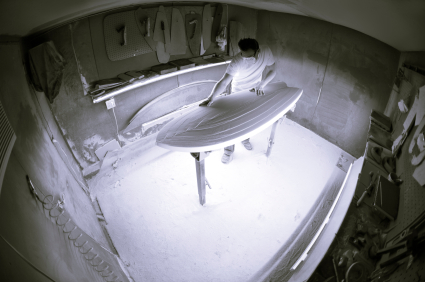 When the typical surfer thinks about the deck of his surfboard, it's usually just to assess the wax situation. Fresh coat? Comb? Not many of us think very hard about the various types of surfboard decks or how those design features translate into performance. While one might think shapers have enough to think about and tinker with in regards to stringers, rocker, fin placement, and tail design, we now have a couple pioneers beginning to rethink deck design. These new ideas offer ways to shape stronger surfboards that are thinner, lighter, and more responsive. We're in.
When the typical surfer thinks about the deck of his surfboard, it's usually just to assess the wax situation. Fresh coat? Comb? Not many of us think very hard about the various types of surfboard decks or how those design features translate into performance. While one might think shapers have enough to think about and tinker with in regards to stringers, rocker, fin placement, and tail design, we now have a couple pioneers beginning to rethink deck design. These new ideas offer ways to shape stronger surfboards that are thinner, lighter, and more responsive. We're in.
Although the vast improvement in shaping and design software gives shapers more tools to play with volume distribution, the masses didn't start paying attention until Kelly Slater won the most famous surf contest on Earth (2008 Pipeline Masters) on a 5'11" shorty in pumping surf. Different theories revolve around the concept of removing foam from the deck without sacrificing total volume. Most recently, we have seen a new designs wander away from the traditionally domed deck and flat deck. One of the more curious designs is the "step deck", creation of Santa Cruz Surfboards' shaper Chris Gallagher. There is a visible transition from the thin rails to the bump in the foam leading to the platform deck. According to Mike Cianciulli of Transworldsurf.com, Gallagher claims the surfboard paddles better, has speed to burn, and provides plenty of stability and response. Gallagher also claims the deck’s solidness and lack of flex make the surfboard land airs more easily.
There are surfboard designs with snappier options, such as the "D-flat" shape created by Steve Boysen of SB Surfboards. According to the same article on Transworldsurf.com, the design involves dispersing a football shaped portion from the center of the board to the rails. The result is a thinner surfboard with more flex and boxier rails, giving it a much livelier feel. It is not quite as extreme as a traditional flat board, which has fuller rails and a thinner stringer and breaks more due to the lack of strength in the middle.
As in most surfboard design features, you have options when it comes to deck design. It's nice to know there are some smart shapers doing the hard part for us. All we need to do is show up and find out what we like.
Surfboard Deck Types
The idea of these different variations of deck shape is to displace foam throughout the deck without sacrificing the surfboard’s overall volume. The different shapes help control the volume of the board and rails. The following are a few variations of deck shape taking the market:
Dome deck – The most common type of deck. The dome shape allows for more volume to be displaced towards the center to add volume and buoyancy. The rails are thinner in order to reduce the buoyancy. This makes it easier for the surfer to dig the rails into the face of the wave in turns and maneuvers.
Flat deck –The rails on a flat deck surfboard are boxier and edgier with less roundness. The top of this type of surfboard deck is flat with extra volume in the rail. This is designed with more increased flex for a snappier feel. The downside is the surfboard is weaker and more likely to snap. If the rails are too thick, this will hinder the surfer from digging the rails when needed.
Step deck– The setp deck design allows for thinner rails. This type of surfboard deck has added volume, stiffness and strength, but not necessarily buoyancy. The result is a stronger surfboard with more paddling power and better landing on aerials.

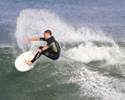

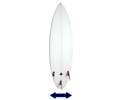



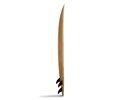






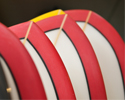
1 Comment